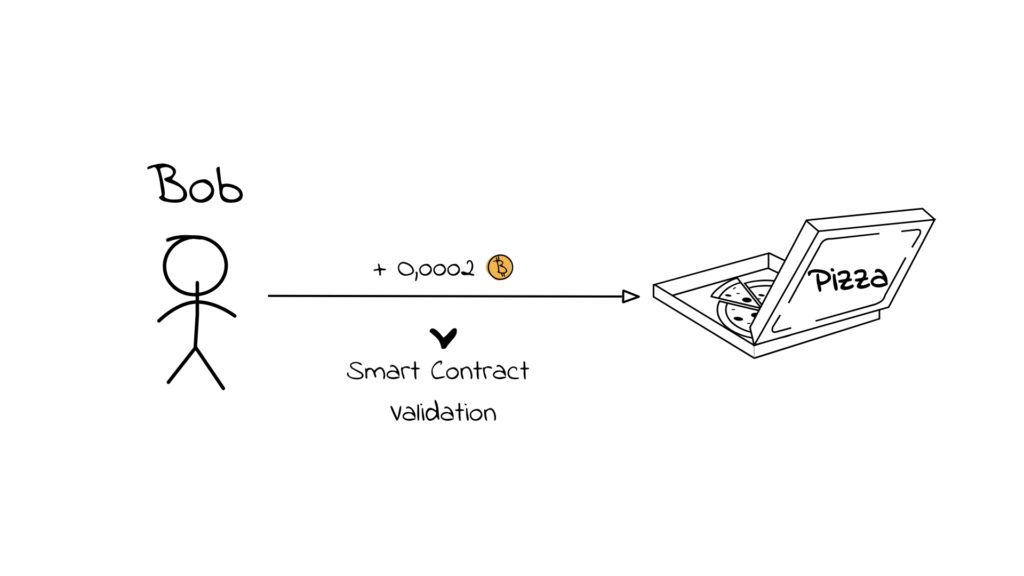Scalability is a significant obstacle that restricts the widespread adoption of cryptocurrencies. If scaled properly, a blockchain network can handle millions to billions of transactions per second (TPS), bitcoin’s blockchain can only process an average of 7 transactions per second. This is not enough to make Bitcoin a suitable tool for handling the millions of transactions humans make every day. Thus, if Bitcoin is to become a medium of exchange, payment systems must be built that allow users to transact bitcoin quickly and cheaply.
Back in 2015, two researchers (Thaddeus Dryja and Joseph Poon) proposed a solution called “The Bitcoin Lightning Network: Scalable Off-Chain Instant Payments.”
To understand better the core technology behind the Lightning Network, we recommend you to read our article on Layer 1 and Layer 2.
What Is the Lightning Network?
The Lightning Network is a Layer 2 protocol designed to enable off-chain bitcoin transactions, which are not recorded on the main blockchain. In this context, the Lightning Network charges low fees by transacting off-chain, allowing for new use cases like instant micropayments that can speed up the processing times and reducing the energy costs associated with Bitcoin’s blockchain.
How the Lightning Network Works?
The Lightning Network protocol enables the creation of a peer-to-peer payment channel between two parties. Once established, the channel allows them to send an unlimited amount of small payments that are nearly instant and inexpensive. It acts as its own little ledger for users to pay for goods and services without affecting the Bitcoin main network.
To create a payment channel, the payer locks a certain amount of bitcoin into the Lightning network. Once the bitcoin is locked in, the recipient can invoice amounts of it via smart contracts and if the payer wants to keep the channel open, he/she can choose to add more Bitcoin and continue with the transactions in the network.
In contrast to transactions on the main Bitcoin blockchain, here some transactions are handled differently. For instance, when two parties open and close a channel, they are updated on the main blockchain, but when two parties transfer funds between themselves it is not required to tell the main blockchain. Because all transactions within a blockchain do not need to be approved by all nodes, this substantially speeds up the transaction time. Lightning Network’s nodes that are capable of routing transactions are formed with the mission of combining individual payment channels between the concerned parties, making the Lightning Network the outcome of many payment systems being linked together.
Eventually, when the two parties decide to close this transacting channel, all of the channel’s information is then consolidated into one transaction, which is sent to the Bitcoin mainnet for recording. The goal is to spam the main blockchain with dozens of small transactions at once by simplifying them into one transaction that takes less time and effort for the nodes to validate.
With the Lightning Network, Bob can open up a payment channel with the pizza place he regularly visits. Each pizza purchase is recorded within that specific channel. The transaction is cheap as well as instant. Then, when the amount of bitcoin that started the channel is spent, Bob can choose to close the channel or refill it. When a channel is closed, all of its transactions are summed into one and then recorded to the main Bitcoin blockchain.
Lightning network transaction between Bob and a Pizza place

The Lightning Network works by creating a smart contract between the two parties. The agreement rules are coded into the contract upon creation and once those requirements are met, like when a customer pays the correct amount for a pizza, the contract automatically fulfills without third-party involvement. The Lightning Network is also anonymous – all anyone can see is the total transfer of value and not the micropayments.
Problems
One of the biggest problems with the Lightning Network is offline transaction scams.
If one of the participants chooses to close the payment channel while the other is offline, the former can steal the funds. When the victim finally comes online, it’s would be too late to do anything as the scammer can just remain offline and there would be no way to reach them.
The Lightning Network can also suffer from bugs. Stuck payments are one of them. The Bitcoin network will refund you outgoing transactions that don’t see verification, but it may take days to acquire, as valid transactions see more priority than stuck ones when it comes to verification.
Finally, even if the Lightning Network works out these issues, there is still the case of regulations. Regulators may struggle to understand Lightning Network enough to enact proper legislation and if regulators struggle, mainstream crypto users might struggle to use the Lightning Network as well. Even if regulators do understand the protocol, they might not allow the Lightning Network usage due to its anonymity, considering that only a finalized transaction can be seen after the user closes their payment channel and not the individual transactions made within a channel.
The Future of Bitcoin’s Lightning Network
According to statistics, there is over $123 million (as of September 2021) in Bitcoin locked into the Lightning Network. These could be users paying for goods and services, utilizing apps and more.
It’s also worth noting that development on the Lightning network has expanded to work as a layer-two solution on various use cases.
Cryptocurrency exchanges are also starting to give proper attention to the protocol, bringing the Lightning Network to mass adoption, as exchanges that integrate the Lightning Network allow traders to withdraw smaller amounts of Bitcoin cheaply and instantly. Without this protocol, users may suffer from high transaction fees and wait times due to Bitcoin’s traditional technology.
A new type of protection service has also been introduced – Watchtowers. They are various specialized nodes that go offline from time to time, leaving their payment channels open as bait to offline transaction scams. Instead of leaving their channel unattended when offline, a participant can pay a small fee to a watchtower and provide a signifier related to the channel transaction and keeps an eye on it.
If the watchtower senses malicious activity, it will automatically freeze the funds and refund them back to the offline user and will penalize the malicious party by removing their funds from the payment channel.
And last but not least, El Salvador’s historic adoption of bitcoin as legal tender in September this year marks the real-life use case of the cryptocurrency as a method of purchasing in restaurants, drive-through facilities, shops, and other everyday life micropayments. All this backed by the implementation of the Lightning Network.



